
The role of marketing in the Internet age is becoming more and more critical. In the past, people knew little about Internet marketing. Even now, many people still don’t understand why they need to market online. Some people think that marketing is just a simple sale or promotion. Others believe that advertising on Facebook is marketing. But these are only tools and methods.
However, you can formulate a complete and effective marketing strategy with tools and methods specific to your brand.
In this article, you’ll learn 6 steps to formulate your brand’s marketing strategy.
Why you need to develop a marketing strategy
Many business owners believe that marketing costs a lot of money. And that their products are good enough to attract customers through word-of-mouth marketing.
But when companies fail to plan their marketing strategy, customers may not discover their brand regardless of how good their products are.
Moreover, companies that fail to create a complete marketing plan will inevitably miss many market opportunities in this “digital war.” They even risk losing the entire market share.
With a complete marketing strategy, you’ll be able to see things from a macro perspective. This strategy includes the nature of your company, the advantages of your products, the degree of your market competition, and the available marketing channels.
Step 1: Define your business goals
When you are formulating a marketing strategy, you must first think about the overall goal of your business.
What kind of goals do you want your business to achieve?
Is it to increase market share and visibility in existing markets? Or is it to enter a new market? Or even launch new products for existing markets?
Each goal will involve your company’s resources and schedule, so you need to consider these things while planning.
Market penetration: existing products × existing markets
Through advertising, you can persuade consumers to change their current purchasing patterns. Of course, you would have to offer something different that attracts them to choose your products. Something better. By doing this, you’ll increase your brand awareness and product sales.
An example of this is the case of Netflix and Blockbuster. There was a time when people rented DVDs to watch movies. (What?! People rented DVDs?! I know. It was a long time ago.)
Blockbuster was once the biggest video rental chain in the US. At one point, it had almost 9,000 stores worldwide, with one new store opening every 17 hours. Then came Netflix. For less than 10 dollars a month, people can stay at home and binge-watch movies and series at the comfort of their home. With Netflix, people didn’t need to go outside and rent DVDs. They didn’t need to return the DVDs anymore. And for less than the price of one movie ticket per month, they get to enjoy countless shows.

Netflix offered a better alternative to renting DVDs from Blockbuster. Basically, Netflix offered everything Blockbuster provided to their customers. Minus the hassle parts. And through time, people changed their purchasing habits. They started to choose Netflix over Blockbuster. And now, you barely even hear of Blockbuster.
Market development: existing products × new markets
Find customers in different markets with the same product needs. Of course, you’ll have to adjust your product positioning, content, and marketing methods.
An example of this is skincare products. Many of them start locally, as these businesses know what their local market needs. Then, when they become more popular, they extend their reach to other states. Sometimes, to other countries. Thereby reaching new markets.
However, as you know, different countries have different cultures. Some cultures adore having a darker skin tone. Others prefer a fairer skin tone. So, a skincare product’s USP (Unique Selling Proposition) might be marketable in one location but not in another.
Therefore, if you’re like one of these businesses, do your research first. See if you need to change your product’s message a little bit. But once you know what works best for the new market, you’ll be able to extend your brand’s reach.
Product extension: new products × existing markets
This is quite simple. Increase order sales by selling new products to existing customers. Electronic merchandise updates are a common example of this. iPhone X to iPhone 12. Yearly software updates. LeBron James sneakers. You get the idea.

Diversified development: new products × new markets
Unfamiliar markets, unfamiliar products. This growth strategy is often risky because you don’t have access to previous data to predict how the market will react to your products. However, if you’re still keen on pursuing this path, then you have to focus on your messaging. It has to be in a way that your market can understand. If they can grasp it in their minds, then you’ll have a higher chance of selling your products to them.
“Oh, so it’s like Product X, but combined with the features of Product Y!”
Invest in your market research and copywriting. You have to make sure that your audience will understand your product. Because a confused mind never buys.
Step 2: Position your brand and products
After defining your business goals, you have to have a clear brand positioning. If it’s not clear, your market will decide its positioning for you. That’s not what you want. You want to be proactive in positioning your brand so that you have more leverage over your competitors.
A brand’s positioning is the conceptual place you want your customers to associate with you. It involves looking at consumer behavior, purchase motivation, thoughts on price, product or brand features, and ranking relative to your competitors.
There are many factors that affect people’s purchase decisions and brand perception. Therefore, brand positioning is also a process for you to gather as much information as you can.
Review and adjust your views to ensure that you have a complete picture of your brand. Then find the intersection between your brand’s advantages, customers’ needs, and your unique selling proposition.
Keep in mind that your customers’ wants and needs may change over time. That means you have to review your brand’s positioning so you can make the necessary adjustments and satisfy your customers.
Step 3: Find the right customer group using STP
Effective marketing is targeting the right customers and establishing the right relationships. That means finding a group of people and designing your products, prices, marketing channels, and promotional plans based on their needs.
Now, to help you find the right customer group, you will need to follow these three steps:
- Segmentation
- Targeting
- Positioning
3-1: Segmentation
“I want EVERYONE to buy my products.”
Sorry to burst your bubble but… it ain’t gonna happen. In fact, it’s unlikely that every type of customer will need your product or service. Why? Because every single person has different wants and needs. Different beliefs and opinions.
If you can put your focus on a group of people who need your products or services, you’ll be able to sell much more compared to relying on purposeless, random marketing.
Therefore, you must first look at the entire market from a macro perspective. Then, define your customer avatar.
(What’s that you say?)
It’s the outline of your target customers. It describes them using details such as:
- Age
- Gender
- Marital Status
- #/Age of Children
- Location
- Occupation
- Job Title
- Annual Income
- Level of Education
- Goals
- Values
- Challenges
- Pain Points
- Buying Preferences
You need to understand them on a deeper level. Take into consideration their purchasing patterns, motivation, and dreams in life (if you can).
And by understanding every angle of their utmost desires, you’re increasing the chances of selling your product.
3-2: Targeting
After studying your customer avatar, summarize all the features and benefits of your product and analyze how they line up with your target market’s needs.
To find out the selling point of your product, you have to look at 3 things:
- Customer needs
- Features of your competitors’ products
- Features of your product
Customer needs:
You shouldn’t sell your product because you think it’s great and people will buy it. You cannot force them to love your product. Instead, look at it from their perspective. What do they care about? What do they need?
If your product cannot solve their problems, it won’t sell well even if it has the best features.
That’s why you need to have a customer avatar. It helps you focus on the people benefitting from your product. Not you.
When you have something they want, they’ll give you money.
(Remember, you can’t offer Wagyu beef to raw vegans. Even for a 90% discount. That ain’t gonna end well, honey.)
Features of your competitors’ products:
You give your customers a great first impression when you offer them something they haven’t seen before. Study your competitors’ products. Learn their selling points so you’ll know what to include or not include. Then come up with something unique to your product. Of course, your selling point has to be useful.
 Features of your product:
Features of your product:
Once you know what your customers deeply care about and what your competitors are offering, you’ll be able to find the gap where you can introduce your selling point.
Not that it’s easy. In fact, it might be challenging for you to find this unique product feature. But it’s what will make it rare. And people value rare things. As long as it’s useful to them, of course!
And don’t you think about manipulating your message to entice your customers. Especially when it comes to their needs. Giving the impression that you can fulfill their needs when you really can’t is called false advertising. You may get a lot of sales in the beginning, but you’ll lose your customers. What’s worse is you’ll get a bad reputation.
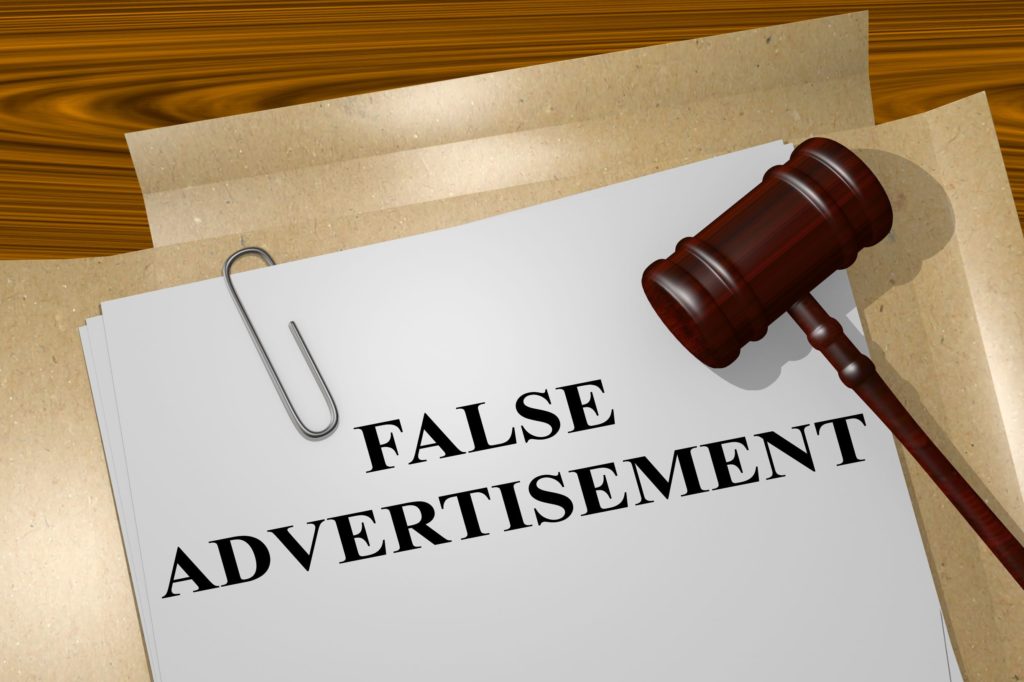
This is important…
If you lose your customers’ trust, it’ll be hard for you to gain it back.
However, even if you have your customer avatar and product selling point, you still need to pay attention to this concept: the customer’s decision-making context may change at any time.
If a potential customer is initially interested in your products, but sees that competing products can solve other specific needs, they might buy competing products instead. This can be due to changes in their current situation, which prompts them to make different decisions.
3-3: Positioning
After studying your customer avatar and selling point, the next step is analyzing all your data to develop the most beneficial value proposition for your brand and product.
Here, we’ll take a look at Fersgo as an example:
 Fersgo originally started as an OEM (original equipment manufacturer) mouse brand. They cooperated with European and American manufacturers to develop ergonomic mice.
Fersgo originally started as an OEM (original equipment manufacturer) mouse brand. They cooperated with European and American manufacturers to develop ergonomic mice.
But this area was occupied by three large brands.
After analyzing the brand positioning and competitors, Fersgo re-adjusted their product positioning and changed to “ergonomics” as their basic core value to develop new products.
Then they worked on their value proposition: to develop a variety of ergonomic products to help users improve work efficiency and alleviate the sequelae caused by sitting for long hours.
After establishing this position, Fersgo wanted to enter the US market through Amazon.
TransBiz assisted Fersgo in planning their online marketing strategy, including:
- Official website
- Amazon sales page
- Landing page
- Influencer marketing
- Facebook advertising
- Press release
- Content optimization
- And more!

In just three months, Fersgo was able to gain traction and compete with large brands. All with the help of having the right marketing strategy.
Step 4: Choose the marketing channels that your potential customers use
After establishing your brand’s value proposition to customers, the next step is to choose the right channels to deliver your brand’s voice. This will create opportunities for your customers to find you.
Nowadays, the types of marketing channels tend to be diversified. There’s traditional communication media such as radio broadcasting, TV commercials, billboards, direct mail, news, etc. On the Internet, there’s official website, Facebook, YouTube, Instagram, pay-per-click advertising, emails, blogs, podcasts, etc.
7P Marketing
After you’ve looked at your product, market, and positioning, you can evaluate your marketing strategy by using the “7Ps”.
7P Marketing is based on the traditional 4P theory (Product, Price, Promotion, Place), with the consideration of account customer operations and changes in the external environment (Process, Physical Environment, People).
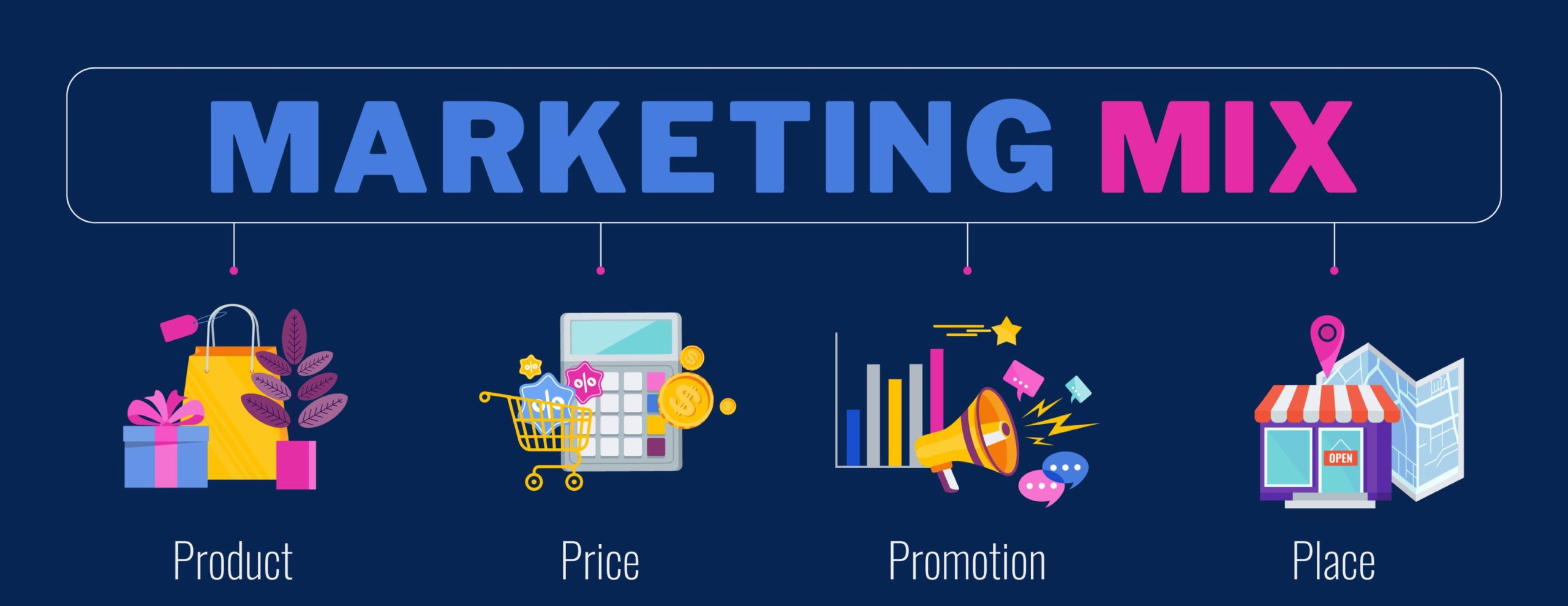
The transition from 4P to 7P could be seen as a transformation from a one-way promotion into two-way communication.
In the past, a promotion centered on the brand itself. Marketers did this through television, radio, and print advertisements. Basically, people saw the ad, and it was up to them whether or not they would do something about the information. People were absorbing the information, but they couldn’t interact with the brand.
7P marketing focuses on participation, which fosters a better relationship between a brand and its consumers.
- Product: design, quality, usefulness, convenience, packaging, branding
- Price: customer perception value, discount, payment method
- Promotion: advertising, special offers, endorsements, user trials, publicity
- Place: accessibility, sales channel, retail, wholesale, Internet, direct sales
- People: customer relationship, employees, attitude and behavior, culture
- Process: customer experience, shopping process, activity process
- Physical Environment: facilities, run-down, interface, smart, comfort
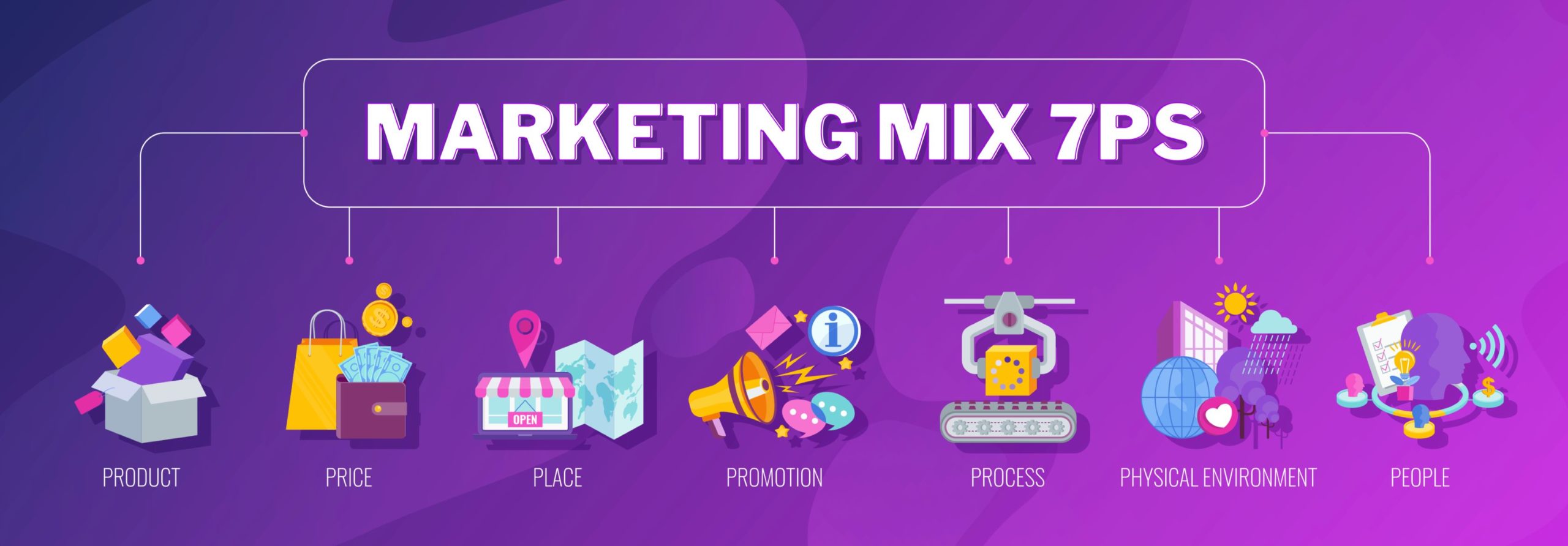 To optimize your marketing strategy, you must combine online marketing with offline activities. Since the battle for everyone’s attention online is becoming more and more fierce, increasing physical interaction will play an important role. Physical interaction will help people see and remember your brand when they’re not online.
To optimize your marketing strategy, you must combine online marketing with offline activities. Since the battle for everyone’s attention online is becoming more and more fierce, increasing physical interaction will play an important role. Physical interaction will help people see and remember your brand when they’re not online.
Step 5: Manage your loyal and old customers
Studies have shown that it costs 5 times as much to get a new customer than to keep an existing one. Furthermore, customers these days have more products to choose from. That means old customers are more likely to try new products (competing brands).
One of the ways to solve this problem is to make use of a membership system.
Take Amazon as an example. Amazon Prime members spend an average of $1,200 on Amazon each year, while non-Prime members only spend around $500. People who switch to Amazon Prime spend 2.4 times more.
You might think that it’s a little counterintuitive because, from the consumer’s perspective, they’re signing up for Amazon Prime to reduce their costs. Primarily the delivery costs. But you should try it yourself. Shopping becomes a little more addicting when you know you can receive a product within a day or two after your purchase.
Without Amazon Prime, your order should amount to at least $25 to qualify for free delivery. And you won’t likely get it in two days! If you want to receive it soon, you’ll have to pay for the shipping and handling. This situation makes you think about how you shop on Amazon.
But for a small monthly/yearly fee, with Amazon Prime, you can shop and get your products fast. And once you’ve experienced the benefits of Amazon Prime, you wouldn’t want to go back to your old shopping experience. You just get a lot of benefits.
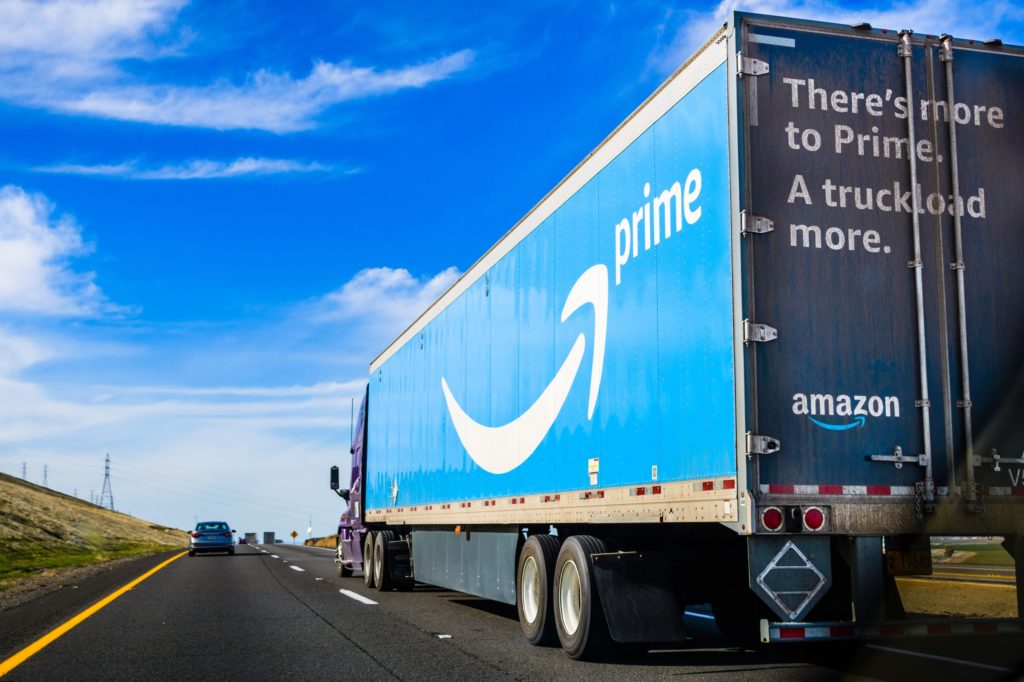 Did I mention that you also get to watch movies and series for free? Well, not all of them are free. But for a small price, you can watch whatever you see available on Amazon. And you can watch it in the comfort of your own home.
Did I mention that you also get to watch movies and series for free? Well, not all of them are free. But for a small price, you can watch whatever you see available on Amazon. And you can watch it in the comfort of your own home.
Now, do you see how someone’s purchases accumulate over time? This is Amazon’s way of keeping customers excited and engaged frequently. By keeping them hooked, customers are less likely to unsubscribe their Amazon Prime account.
In the same way, you should frequently engage with your customers. Keep them excited. Have them look forward to something new every once in a while.
Of course, the membership system is not the only way to tackle this situation. Another way for you to engage your customers is through email marketing.
Remember during the 2020 pandemic, you suddenly received emails from brands you rarely interacted with? Yeah… don’t be like them. It’s like, for some reason… they just suddenly remembered you. But before that, it’s like you weren’t really that important.
 You don’t want to give that kind of feeling to your customers. You want them to feel loved. Let them know that you often think about them. And that their happiness is your success. You can do that by sending emails a couple of times a week.
You don’t want to give that kind of feeling to your customers. You want them to feel loved. Let them know that you often think about them. And that their happiness is your success. You can do that by sending emails a couple of times a week.
Here are a few things you can do with your email marketing:
- Keep customers up to date with what’s happening in terms of your brand and products.
- Teach them something they could use.
- Let them know about the upcoming events you have.
- Ask them if they have any questions for you.
- Ask for feedback.
- Give them links to free stuff.
- Let them know that there’s a real person who cares about them.
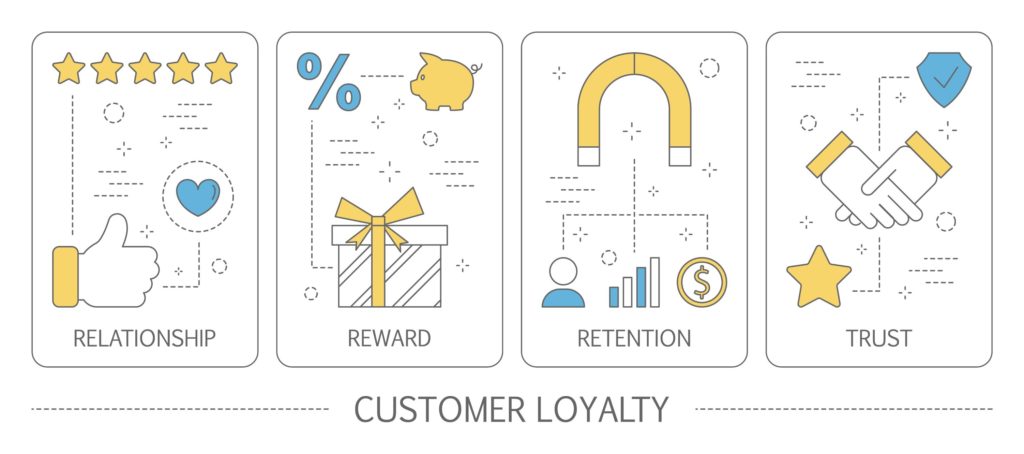
And guess what? Once you do that, you’ll encourage current customers to stay loyal to your brand.
You can also use social media, podcasts, courses, and more! Be creative. Use the data you’ve gathered. Internalize their behavior. Then come up with a way to keep them engaged and have your brand constantly in their minds.
Also, the more your customers think about your brand and products, the more likely they’ll talk about you with their family and friends. That’s word-of-mouth marketing. It doesn’t cost a thing, and it spreads organically. Basically, you’re turning your old customers into brand ambassadors, which will attract new customers.
Step 6: Use the business model diagram to organize your marketing resources
Last step! The purpose of the value proposition map is to help you find “gaps” in the market. Using this will also help your target customers immediately understand what your brand provides.
This is especially useful if you’re relatively new to the market. You want your target customers and your products to be a perfect fit.
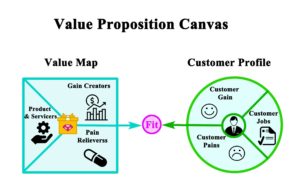 By now, with all the research you’ve done, you should have a good idea if you can fill a gap in the market. Of course, you should verify with actual data whether your value proposition can truly meet the needs of your potential customers.
By now, with all the research you’ve done, you should have a good idea if you can fill a gap in the market. Of course, you should verify with actual data whether your value proposition can truly meet the needs of your potential customers.
Finally, take a look at your business model.
When you launch your brand, product, and service, what will your marketing campaign look like?
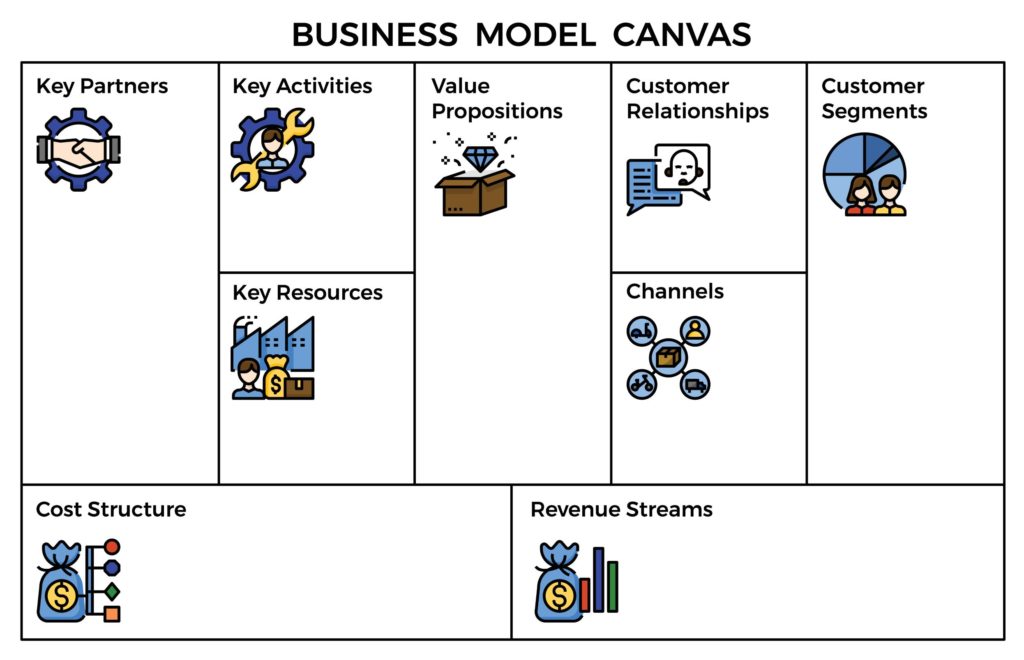 Complete the business model canvas, and you’ll have a good overall view of your business.
Complete the business model canvas, and you’ll have a good overall view of your business.
INFRASTRUCTURE
- Key Partners: Identify partners that complement your business model in order to reduce your risks.
- Key Activities: Identify the key activities in your company’s value proposition.
- Key Resources: Human, financial, physical, and intellectual resources you need to sustain and support your business.
OFFERING
- Value Propositions: The set of products and services your business offers to meet the demands of your potential customers.
CUSTOMERS
- Customer Relationships: To ensure the survival and success of your business, you must identify the type of relationship you want to create with your customers. It should address how:
- Your business will get new customers.
- You’ll encourage customers to keep buying your products or services.
- You’ll increase your revenue.
- Customer Segments: You can segment different types of customers based on their needs and attributes, so you can optimize a strategy to serve them better.
- Channels: You can deliver your value proposition through different channels. These channels should promote your brand fast, to a large audience, and be cost-effective at the same time.
FINANCES
- Cost Structure: This describes the most critical financial consequences of running your business.
- Revenue Streams: This explains how your business makes money from each customer segment.
Start planning your brand’s marketing strategy today
You now know the importance of formulating a brand marketing strategy. Not only that, but you also know how to carry out and implement this strategy.
During the actual implementation, you will need to make detailed adjustments based on the industry, value proposition, product type, target market, etc. Apply the 6 Steps you’ve just learned, and you won’t go far off in terms of offering the right products/services to your customers.
If you want to fast-track your way to getting the right marketing strategy and value proposition, you can click the link here and get a free consultation with TransBiz.


